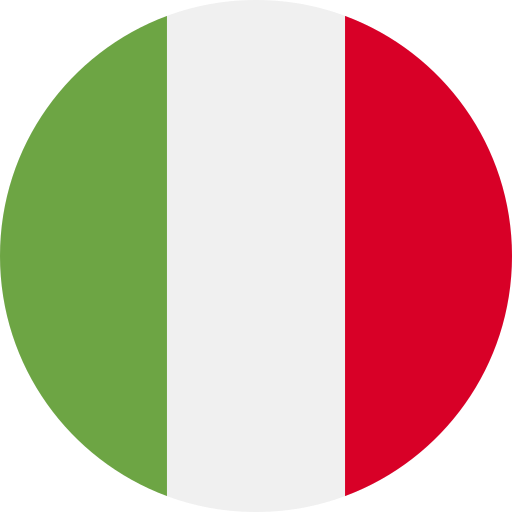Key Takeaways
- Historical Significance: The Italian language has evolved from Latin and gained prominence through historical milestones like the Unification of Italy and the Cultural Renaissance, establishing itself as a standard for art and communication.
- Literary Influence: Key figures such as Dante, Petrarch, and Boccaccio pioneered vernacular Italian literature, greatly shaping both Italian and global literary traditions.
- Cross-Cultural Impact: Italian literature influenced renowned English authors like Shakespeare, enriching English vocabulary and styles with themes drawn from Italian works during the Renaissance.
- Artistic Mastery: The Renaissance period showcased Italy’s artistic legacy through renowned artists like Michelangelo and Raphael, whose contributions set enduring standards in visual arts globally.
- Architectural Innovation: Italian architectural movements have left a significant mark worldwide, promoting stylistic elements that continue to inspire modern design practices.
- Modern Language Integration: Italian vocabulary enriches various languages today; terms related to cuisine, music, and lifestyle are commonly used across cultures, reflecting Italy’s lasting influence.
Ever wondered why Italian is often seen as the standard language of art and culture? The influence of this beautiful language stretches far beyond its borders, shaping literature, music, and even culinary traditions. As you dive into the world of Italian, you’ll discover how it became a cornerstone for communication across various fields.
Historical Context of Italian Influence
Italian has a rich history as a standard language that significantly shaped various aspects of art, culture, and communication. Its development reflects social changes and major historical events that contributed to its prominence.
Development of the Italian Language
The Italian language emerged from Latin, evolving through several dialects across the regions of Italy. By the 14th century, writers such as Dante Alighieri began using vernacular forms in their works, leading to greater acceptance of Italian as a literary language. The creation of dictionaries and grammars in the 16th century further standardized Italian. As it spread beyond regional boundaries, it became synonymous with artistic expression and cultural refinement.
Major Historical Events Shaping Language
Several key events influenced the status of Italian as a standard language:
- Unification of Italy (1861): This political shift helped establish one common language among diverse regions.
- Cultural Renaissance (14th-17th centuries): The flourishing arts led to increased use and prestige for the Italian language in literature and music.
- Colonial Expansion: Contact with other cultures introduced new words and concepts into the vocabulary.
These historical milestones solidified Italian’s role not just within Italy but also across Europe, making it essential for artists, musicians, and chefs who sought to communicate their craft effectively.
Italian Influence in Literature
Italian literature plays a crucial role in shaping the literary landscape, showcasing the language’s beauty and depth. This influence extends beyond Italy, reaching global audiences and inspiring countless writers.
Key Literary Figures
Key figures like Dante Alighieri, Petrarch, and Boccaccio pioneered the use of vernacular Italian in their works. Dante’s Divine Comedy exemplifies the transition from Latin to a more accessible form. His intricate exploration of morality and spirituality set a standard for future authors. Petrarch’s sonnets introduced emotional expression that resonated with readers, while Boccaccio’s Decameron highlighted narrative innovation through storytelling. These authors laid the groundwork for modern literature by demonstrating how powerful the Italian language can be as a vehicle for complex ideas.
Impact on English Literature
The impact of Italian literature on English writing is significant. Many English authors drew inspiration from Italian themes, forms, and styles. For instance, Shakespeare incorporated elements from Italian plays into his own works, creating rich characters and intricate plots. The Renaissance period saw an influx of translations that allowed English-speaking audiences to engage with Italian classics directly. This cross-pollination enriched the vocabulary and stylistic choices available to English writers, resulting in a vibrant literary culture that continues today.
Through these connections between languages, you can see how deeply intertwined cultures shape artistic expression across borders. The legacy of Italian literature endures not just within its own context but also through its lasting influence on global literature as a whole.
Italian Influence in Art and Architecture
Italian influence permeates art and architecture, shaping styles and practices worldwide. The Renaissance marked a pivotal moment, showcasing Italy’s artistic prowess and establishing standards that resonate today.
Notable Artists and Architects
Italy boasts a rich tapestry of artists and architects whose works transformed the cultural landscape. Figures like Michelangelo, known for his stunning sculptures such as “David,” exemplify the mastery of form and emotion. Raphael’s paintings harmoniously blend colors and composition, embodying beauty in every brushstroke. In architecture, Filippo Brunelleschi revolutionized dome construction with the Florence Cathedral’s iconic dome, setting benchmarks for future generations.
Architectural Styles and Language
Architectural styles originating from Italy include Romanesque, Gothic, Renaissance, Baroque, Neoclassical, and Modernist movements. These styles emphasize proportion, symmetry, elaborate ornamentation, or minimalist design elements. The language of these architectural forms communicates elegance through arches, columns, domes; each structure tells a story reflecting cultural values.
Overall, Italian influence remains a guiding force in global art and architecture. Its legacy continues to inspire creativity across various mediums while promoting cross-cultural dialogue through visual storytelling.
Italian Influence in Modern Language Use
Italian has significantly shaped modern language, particularly in art, music, and culinary contexts. Its influence extends beyond borders, enriching various languages worldwide.
Borrowed Vocabulary
Italian vocabulary permeates many languages, especially English. Terms like “cappuccino,” “pasta,” and “opera” are commonly used. These borrowed words not only reflect the cultural significance but also enhance daily conversations. Artists and chefs frequently incorporate Italian terms to describe their craft accurately. For instance, “alla moda” signifies a fashionable style, while “bravissimo” expresses outstanding approval.
Italian Phrases in Everyday English
Certain Italian phrases have seamlessly integrated into everyday English usage. Expressions such as “dolce vita,” referring to a sweet life, or “la dolce vita,” symbolize a carefree lifestyle filled with pleasure. You might encounter these phrases in casual conversations or media references. Their charm adds flair when discussing topics related to lifestyle or culture. Recognizing these phrases helps deepen your appreciation for the rich tapestry of language influenced by Italy’s artistic heritage.
Overall, the infusion of Italian elements into modern communication highlights its lasting legacy and universal appeal across different cultures and languages.
Conclusion
Italian’s influence as a standard language transcends borders and cultures. Its rich history is reflected in the arts and literature, shaping how you perceive creativity today. Whether you’re savoring a dish that uses Italian terminology or enjoying music rooted in its traditions, the impact is undeniable.
The legacy of Italian continues to inspire artists, writers, and chefs worldwide. By embracing this beautiful language in your own life, you not only connect with its cultural significance but also enrich your understanding of global artistic expression. The journey through Italian’s evolution reveals a vibrant tapestry that enhances communication across diverse realms of creativity.
Frequently Asked Questions
What is the significance of the Italian language in art and culture?
The Italian language serves as a foundational standard for art and culture, influencing literature, music, and culinary traditions. Its historical development from Latin through various dialects highlights its role in shaping artistic expression and cultural refinement.
How did Italian evolve over time?
Italian evolved from Latin through different regional dialects. By the 14th century, writers like Dante Alighieri began using vernacular forms, leading to greater acceptance of Italian as a literary language and solidifying its status in cultural discourse.
Who are key figures in Italian literature?
Key figures include Dante Alighieri, Petrarch, and Boccaccio. Their pioneering use of vernacular Italian helped transition literature from Latin to more accessible forms, with Dante’s “Divine Comedy” representing this significant change.
How has Italian influenced English literature?
Italian literature has profoundly impacted English writing. Many English authors, including Shakespeare, drew inspiration from Italian themes and styles, enriching English vocabulary and broadening literary culture.
What impact did the Renaissance have on the arts?
The Renaissance established enduring standards in art and architecture. Notable artists like Michelangelo and Raphael created iconic works that continue to inspire creativity while promoting cross-cultural dialogue through visual storytelling.
How does the Italian language enrich modern vocabulary?
Italian terms such as “cappuccino,” “pasta,” and “opera” have become integral to modern languages worldwide. Phrases like “dolce vita” add charm to discussions about lifestyle and culture, showcasing Italy’s lasting influence on global communication.
Why is understanding Italian important for artists and chefs?
Understanding Italian is essential for artists, musicians, and chefs because it allows them to convey their craft effectively. The rich vocabulary enhances their ability to express ideas related to their artistic or culinary endeavors accurately.







